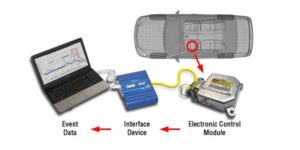 Event Data Recorder (EDR) Position Statement
Event Data Recorder (EDR) Position Statement
WHEREAS, accurate highway crash data allows better understanding of crash parameters and vehicle and safety system performance.
WHEREAS, the knowledge gained from event data recorders can provide future benefits in improved vehicle safety and crash avoidance technologies as well as in enhanced policies to reduce harm.
WHEREAS, drawbacks of the event data recorders including the types of information collected, the reliability of the information, privacy concerns, and ownership of the information have mostly been mitigated by regulatory measures.
Adopted: September, 2003 and updated October 2017
BE IT RESOLVED, the ongoing development and deployment of worldwide, uniform standards governing motor vehicle event data recorders and the appropriate use of the recorded data should be supported..
EVENT DATA RECORDERS | RATIONALE & BACKGROUND INFORMATION
SAFETY
Recorded data from real-world collisions are extremely useful for a variety of purposes including conducting research into various aspects of traffic safety, e.g. evaluating potential countermeasures for collision avoidance, refining occupant protection systems, and monitoring safety systems on the roadway and at roadside. EDRs have become useful tools in the effort to develop safer cars and reduce traffic-related injuries, by providing reliable data about what happens to a driver, occupants, and a vehicle during pre-crash, crash and post-crash. This information is used to improve crash investigation, reconstruction, and analysis methodologies. [1].
DATA COLLECTION AND USAGE
Access to information obtained from EDRs benefits researchers, crash investigators and vehicle manufacturers in improving highway safety. [1], [3].
The term “EDR” can be used to cover many different types of devices. In the context of this position statement, an EDR is a device installed in a motor vehicle to record technical vehicle and occupant information for a brief period of time (seconds, not minutes) before, during and after a crash. For instance, EDRs may record pre-crash vehicle dynamics and system status, driver inputs, vehicle crash signature, restraint usage/deployment status and post-crash data such as the activation of an automatic collision notification (ACN) system. We are not using the term to include any type of device that either makes an audio or video record, or logs data such as hours of service for truck operators. EDRs are devices which record information related to an “event.” In the context of this site the event is defined as a highway vehicle crash. [4].
EDRs generally contain longitudinal delta-V recorded in 10 millisecond (ms) increments over a 300 ms time frame, and five one-second snapshots of the throttle position, brake light switch status, engine revolutions per minute (rpm), and vehicle travel speed prior to the occurrence of a recorded event. [1].
Automatic crash notification (ACN) systems integrate the on-board crash sensing and EDR technology with other electronic systems, such as global positioning systems and cellular telephones, to provide early notification of the occurrence, nature, and location of a serious collision. [1].
EDRs have improved highway safety. The degree of benefit is directly related to the number of vehicles operating with an EDR and the current infrastructure’s ability to use and assimilate these data. [2], [1]. FMVSS 405 mandated EDRs in the United States for all new passenger and light duty vehicles since 2014 and standardized data recording and retrieval. EDR technology has potential safety applications for all classes of motor vehicles (e.g. light duty vehicles, heavy trucks and buses). [1].
Federal Motor Vehicle Safety Standard (FMVSS) Number 405 covers Event Data Recorders. [5]. All light vehicles with a gross vehicle weight rating (GVWR) of 3,855 kilograms (8,500 pounds) or less and an unloaded vehicle weight of 2,495 kilograms (5,500 pounds) or less are to be equipped with EDRs that meets the data elements, data capture and format, data retrieval, and data crash survivability of 49 CFR Part 563, Event Data Recorders (Part 563), which directs the safety standard in the United States. [6].
Lingering concerns regarding privacy and ownership of the data remain.
References
[1] R. P. Owings, Ph.D., NHTSA – Final Report of the NHTSA R & D
Event Data Recorder (EDR) Working GroupTo Docket No. NHTSA –99-5218-9. [2] International Symposium on Transportation Recorders, May 3-5, 1999, Arlington, VA.
A.C. Chidester, J. Hinch, T.C. Mercer, K.S. Schultz. Recording Automotive Crash Event Data. [3] G. L. Evans, Transportation Event Data Recorder Data: Balancing Federal Public Work
Policy and Privacy Rights. [4] EDR Overview, accessed from https://www.nhtsa.gov/research-data/event-data-recorder, on September 21, 2017. [5] FMVSS No. 405, Event Data Recorders accessed from https://www.nhtsa.gov/staticfiles/rulemaking/pdf/405_Mandating_EDR_PRE_12042012.pdf, on October 3, 2017. [6] National Highway Traffic Safety Administration, US code of Federal Regulations 49, Part 563 accessed from https://www.gpo.gov/fdsys/pkg/CFR-2011-title49-vol6/pdf/CFR-2011-title49-vol6-part563.pdf on October 3, 2107.
